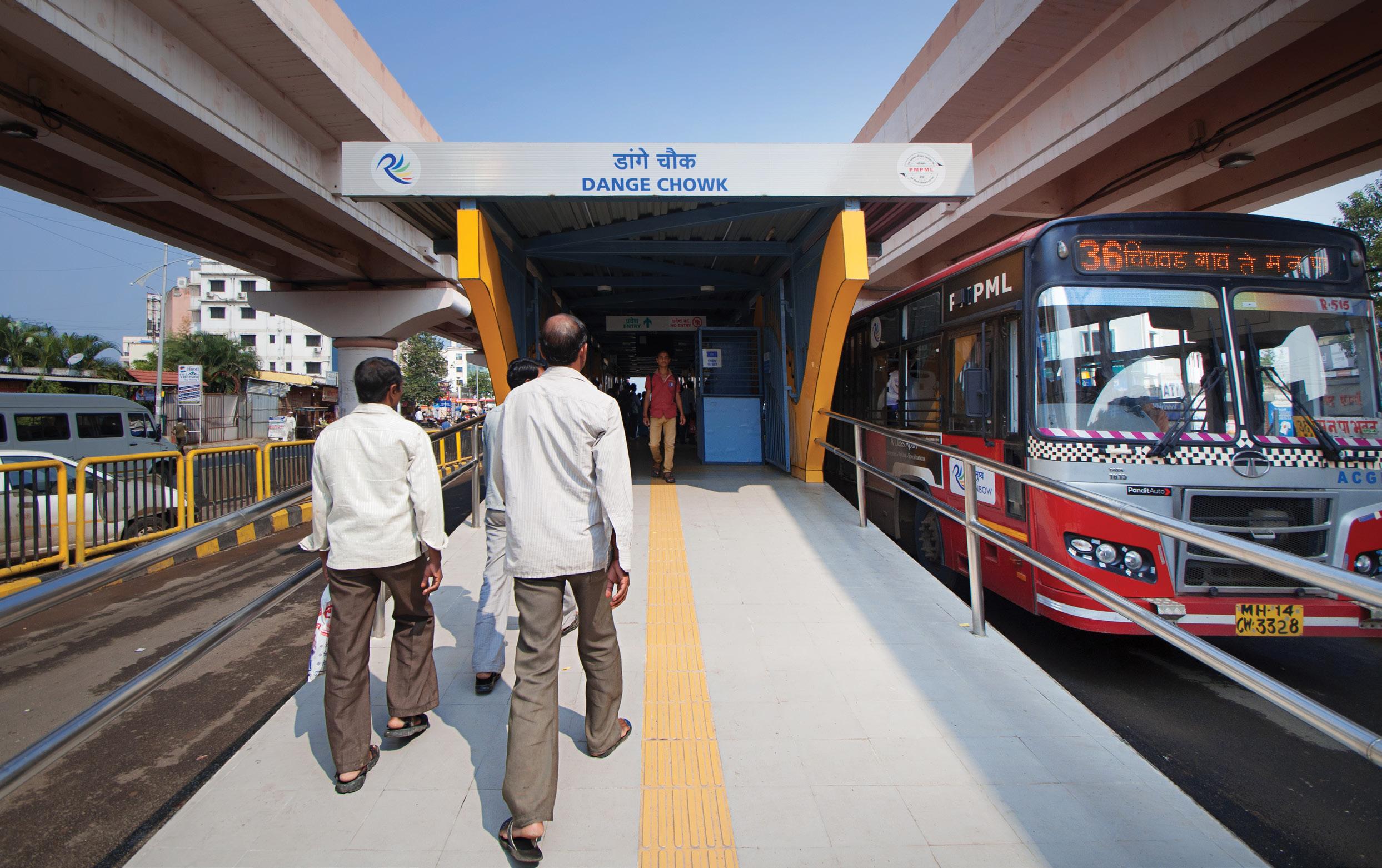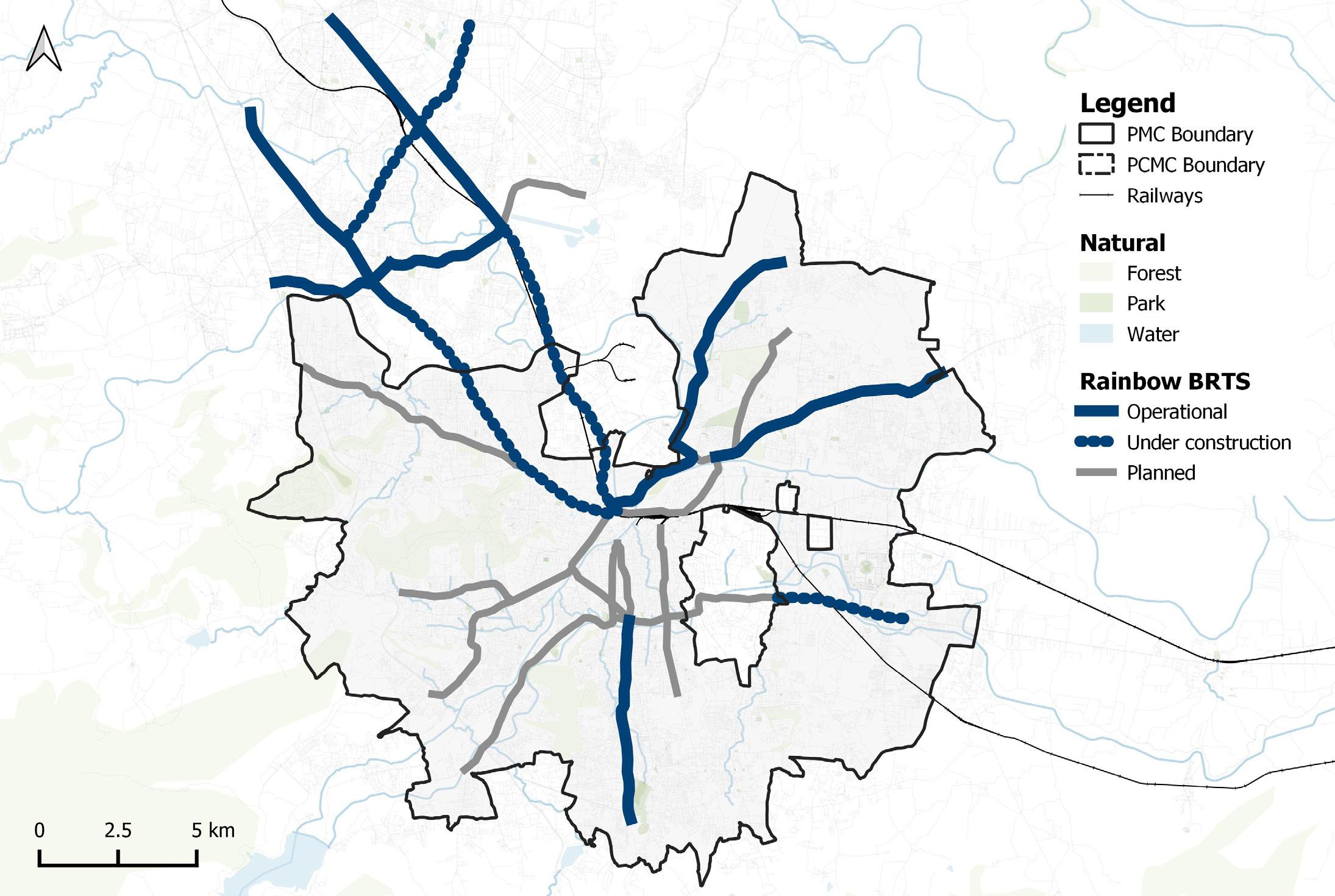
2 minute read
Improving Infrastructure
Not only was Pune the first Indian city to test a Bus Rapid Transit (BRT) system in 2006, it also used the learnings from the pilot to launch the Rainbow BRT system in 2015.
The city has focused on institutional efficacy with the formation of the Pune Mahanagar Parivahan Mahamandal Limited (PMPML). PMPML controls, monitors, and maintains the bus operations in the city. It leverages data to enhance the performance of the bus services and experience of the passengers.
Advertisement
Pune Pilot BRT
2006
Pune became the first Indian city to pilot a Bus Rapid Transit (BRT) system in December 2006. The pilot was launched with 10 new air-conditioned buses on a 16.2 kilometres-corridor stretching from Hadapsar to Katraj via Swargate.
The pilot BRT in Pune served as a milestone in the
evolution of BRT in India.The pilot provided important lessons in design, infrastructure, and operations, and led to the city implementing a completely revamped Rainbow BRT system in 2015.
Formation of PMPML
2007
In 2007, the Pune Mahanagar Parivahan Mahamandal Limited (PMPML) was formed with the merger of the Pune Municipal Transport (PMT) and the Pimpri-Chinchwad Municipal Transport (PCMT) into a single entity. Ever since, the PMPML has served as a dedicated institution providing safe, affordable, and efficient bus services to commuters in both cities.
PMPML operates over 2100 buses, making it the fifth largest bus fleet in the country.

Rainbow BRT
2015
In 2015, the city launched the Rainbow BRT system, building on learnings from the pilot in 2006. The Rainbow BRT comprises high-quality, best-practice design features.
Currently, the Rainbow BRT has over 60 kilometres of dedicated corridors and over 1700 BRT-compliant buses.

Features of Rainbow BRT include:
• Dedicated corridors with median stations; • Universally accessible ramps to the stations, level boarding with sliding doors; • Passenger information system at the BRT stations with real-time service information, informative displays, and route maps; • Intelligent Transit Management System (ITMS) for real-time bus tracking. • Automated Fare Collection System (AFCS) A state of the art transport command and control centre was also set up to monitor performance and service levels, which includes:
• Vehicle health monitoring system across 1,080 buses with intelligent kits and back-end maintenance management system; • CCTV surveillance and panic buttons on 1000 buses to improve security.
Since its launch, millions of commuters have enjoyed high-quality bus rides in the city. For passengers, the biggest incentive has been the savings in travel time. With dedicated bus lanes that allow the Rainbow buses to move faster, commuters can reach their destinations sooner.
Sathe Biscuit BRT Station

Source : ITDP India











